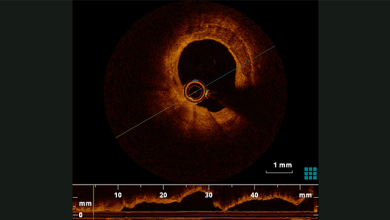Search results
Added:
5 years ago
Dr Nicholas W Shammas (Midwest Cardiovascular Research Foundation, Davenport, IA, US) discusses the B-laser IDE study.
Filmed on site at CRT 2019 by Radcliffe Cardiology.
Questions:
1. What is the rationale for this study?
2. Could you describe the study design and technology used?
3. What were your findings?
4. What implications should this data have for clinical practice and future…
View more
ELCA to Treat Calcified Lesions
Author(s):
Silvio Vera-Vera
,
Artemio Garcia
,
Santiago Jimenez-Valero
,
et al
Added:
1 year ago
Article
Author(s):
Jason H Rogers
,
John R Laird
Added:
3 years ago
Critical limb ischaemia (CLI) is defined as ischaemic rest pain requiring opiate analgesics, and ulceration or gangrene of the foot or toes attributable to arterial occlusive disease.1 In contrast to patients with claudication, those with CLI have resting arterial perfusion that is inadequate to sustain the metabolic demands of the distal bed. CLI has been formally graded within the current…
View more
Author(s):
John Rawlins
,
Jehangir Din
,
Suneel Talwar
,
et al
Added:
3 years ago
The introduction of lasers for the treatment of vascular atherosclerosis began in the 1980s, initially for the treatment of critical limb ischaemia,1 followed by trials that supported its use in coronary circulation.2–5 However, catheters and technique were rudimentary and associated with complications.6,7 Refinements in catheter technology8 and introduction of safe lasing techniques9,10 have led…
View more
Author(s):
Viktor Sasi
,
Gyula Szántó
,
Alexandru Achim
,
et al
Added:
8 months ago
Author(s):
On Topaz
,
Allyne Topaz
,
Pritam R Polkampally
Added:
3 years ago
Plaque rupture and subsequent thrombus formation account for most acute myocardial infarctions (AMIs). Percutaneous coronary intervention (PCI) is considered the preferred treatment for ST-segment-elevation myocardial infarction (STEMI), for evolving non-STEMI (NSTEMI) and for rescue intervention post-thrombolytics.1 The main goals of primary and rescue PCI in AMI include restoration of a normal…
View more

















